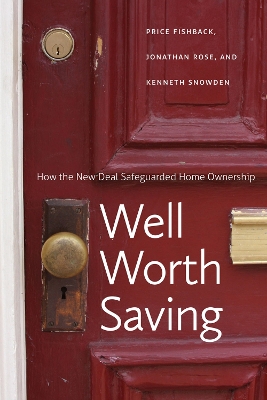National Bureau of Economic Research - Long Term Factors in Economic Development
2 total works
Workers' compensation was arguably the first widespread social insurance program in the United States - before social security, Medicare, or unemployment insurance - and the most successful form of labor legislation to emerge from the early progressive movement. In "A Prelude to the Welfare State", Price V. Fishback and Shawn Everett Kantor challenge widespread historical perceptions by arguing that workers' compensation, rather than being an early progressive victory, succeeded because all relevant parties - labor and management, insurance companies, lawyers, and legislators - benefited from the ruling. Rigorous and convincing, "A Prelude to the Welfare State" is a major reappraisal of the causes and consequences of a movement that ultimately transformed the nature of social insurance and the American workplace.
The urgent demand for housing after World War I fueled a boom in residential construction that led to historic peaks in home ownership. Foreclosures at the time were rare, and when they did happen, lenders could quickly recoup their losses by selling into a strong market. But no mortgage system is equipped to deal with credit problems on the scale of the Great Depression. As foreclosures quintupled, it became clear that the mortgage system of the 1920s was not up to the task, and borrowers, lenders, and real estate professionals sought action at the federal level. Well Worth Saving tells the story of the disastrous housing market during the Great Depression and the extent to which an immensely popular New Deal relief program, the Home Owners' Loan Corporation (HOLC), was able to stem foreclosures by buying distressed mortgages from lenders and refinancing them. Drawing on historical records and modern statistical tools, Price Fishback, Jonathan Rose, and Kenneth Snowden investigate important unanswered questions to provide an unparalleled view of the mortgage loan industry throughout the 1920s and early '30s.
Combining this with the stories of those involved, the book offers a clear understanding of the HOLC within the context of the housing market in which it operated, including an examination of how the incentives and behaviors at play throughout the crisis influenced the effectiveness of policy. More than eighty years after the start of the Great Depression, when politicians have called for similar programs to quell the current mortgage crisis, this accessible account of the Home Owners' Loan Corporation holds invaluable lessons for our own time.
Combining this with the stories of those involved, the book offers a clear understanding of the HOLC within the context of the housing market in which it operated, including an examination of how the incentives and behaviors at play throughout the crisis influenced the effectiveness of policy. More than eighty years after the start of the Great Depression, when politicians have called for similar programs to quell the current mortgage crisis, this accessible account of the Home Owners' Loan Corporation holds invaluable lessons for our own time.

